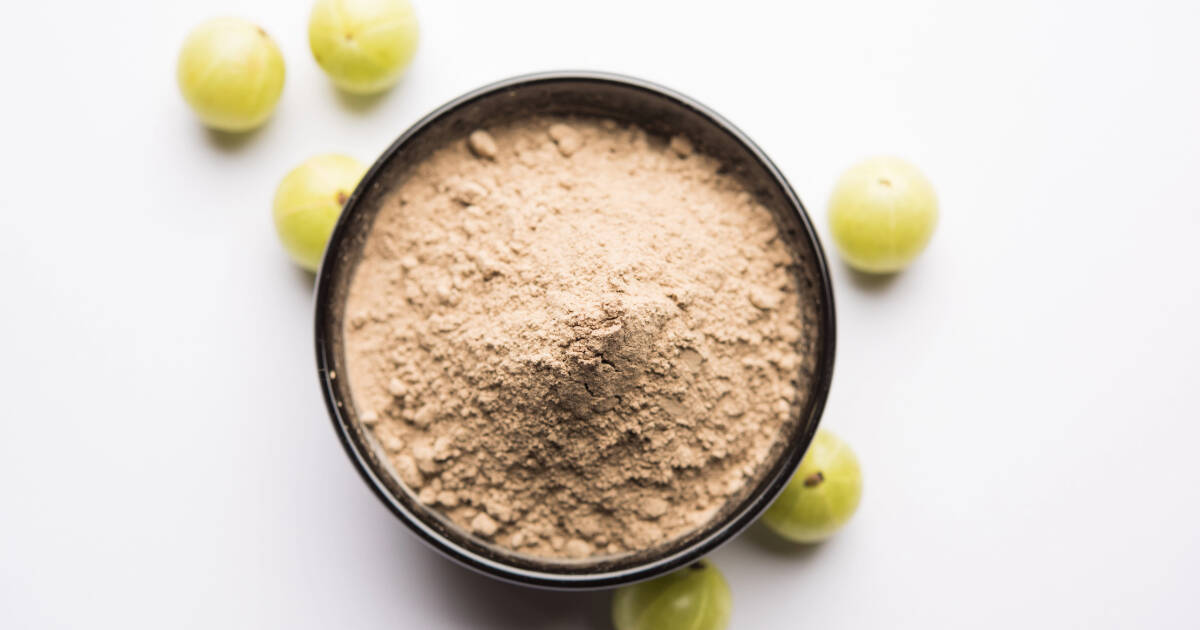Amla powder is a popular Ayurvedic superfood made from the dried and ground fruit of the Indian gooseberry (Phyllanthus emblica). Known for its exceptionally high antioxidant content, amla powder has been used in traditional Indian medicine for centuries to boost immunity, support digestive health, and promote longevity.

But like any natural product, amla powder does have a shelf life. Read on to learn more about how long amla powder lasts, how to store it properly to extend its lifespan, and signs that your amla powder may be past its prime.
How Long Does Amla Powder Last?
The shelf life of amla powder depends primarily on two factors:
- Whether it is refrigerated: Refrigeration can significantly extend the shelf life of amla powder.
- How well it is sealed/packaged: Keeping amla powder in an airtight container in a cool, dark place also preserves freshness.
Here are some general guidelines on how long properly stored amla powder lasts:
- At room temperature: 3-4 months
- In the refrigerator: Up to 1 year
- In a very well-sealed container: Can last over a year, even unrefrigerated
So while amla powder stored at room temperature should ideally be used within a few months, refrigeration and proper sealing can allow it to stay fresh for much longer.
Key Takeaway: Refrigerated amla powder sealed in an airtight container can retain optimal freshness for up to one year or longer.
How to Store Amla Powder for Maximum Shelf Life
Here are some tips on storing amla powder properly to extend its shelf life as long as possible:
Keep in a cool, dark place
Avoid storing amla powder anywhere warm, humid, or exposed to sunlight, as warmth and moisture tend to accelerate spoilage. A kitchen pantry, cupboard, or any other cool, dark spot works well.
Refrigerate
For the longest lasting amla, keep it refrigerated in an airtight container. This will dramatically slow the loss of volatile antioxidant compounds.
Seal tightly in an airtight container
Whether you store your amla powder at room temp or refrigerated, make sure it is tightly sealed in an airtight glass jar or container. This prevents moisture, air, and contaminants from getting in.
Keep away from other foods with strong smells
Avoid storing amla powder beside strongly aromatic spices and foods like onions and garlic, as it can absorb other scents/flavors.
Store amla in small batches
Don’t stock up on amla powder in giant bulk containers. Once opened, transfer some into a smaller airtight container to minimize air exposure as you use it.
Key Takeaway: Keep amla powder in the fridge sealed tightly in a small airtight glass jar. This blocks light, air, humidity, smells, and bacteria to retain freshness.
Signs Your Amla Powder Has Gone Bad
If stored improperly, amla powder can eventually spoil or lose its potency. Here are signs your amla may no longer be fresh:
Change in taste or smell
Fresh amla powder has a tart, tangy, earthy taste and grassy aroma. If the smell or flavor seems “off,” it is likely expired.
Change in appearance/texture
Properly stored amla powder retains its light greenish-brown color and loose, powdery texture. Color changes, clumping, mold growth, etc. indicate spoilage.
Upset stomach
Consuming rancid or moldy amla powder can cause nausea, stomach cramps, and other GI distress. If taking your usual amla dose causes these symptoms, discontinue use.
Don’t consume amla powder past its prime, even if the taste/smell does not bother you, as nutrients may be diminished. When in doubt, remember this saying: “When expired - gets fired!”
Key Takeaway: Signs of expired amla powder include changes in taste, smell, appearance, texture, or gastrointestinal side effects when consumed.
Can You Still Use Expired Amla Powder?
You technically can still use amla powder that is slightly past date, as long as there are no off smells or visible signs of spoilage.
However, potency and nutrient content does steadily decline over time. So while using recently expired amla powder in hair masks etc. is generally safe, ingesting it in smoothies, teas, etc. is not recommended, as antioxidant levels and health benefits may be greatly reduced by the time visible rotting occurs.
For best results, use your amla powder while optimally fresh and replace any excessively old stock. Remember that consuming true superfoods means enjoying them at the peak of potency.
Key Takeaway: Consuming expired amla powder is not recommended as the nutrient content may be significantly lowered, reducing potential health benefits.
FAQs
How long does opened amla powder last?
Once opened, amla powder should be used within 3-4 months for best flavor, aroma, and nutritional value. Keep it in an airtight container in the fridge to get the most life out of opened amla powder.
How long does amla powder hair mask last?
It's best to mix up amla hair treatments fresh each time rather than storing amla paste. But properly refrigerated amla paste could last up to 1 week before drying out or potentially fermenting.
How long does ground amla last compared to whole amla?
Grinding amla into powder form allows the nutrients to start slowly oxidizing when exposed to air. So whole dried amla fruit generally keeps a little longer than pre-ground powder if stored well.
What happens if you eat expired amla powder?
Consuming rancid or moldy amla powder could cause gastrointestinal symptoms like nausea, cramps, vomiting, etc. Although not usually dangerous at typical doses, it is still best avoided.
Conclusion
Amla powder is valued in Ayurveda for its incredible density of antioxidant compounds like vitamin C - but over time, these nutrients can degrade just like other perishable foods or spices. Keep your amla powder well sealed and refrigerated to get the most longevity, and discard portions that show any signs of spoilage or simply taste off.
Enjoying amla powder at the peak of freshness allows you to experience the true potency of this ancient super berry.

